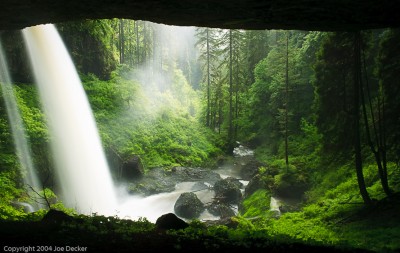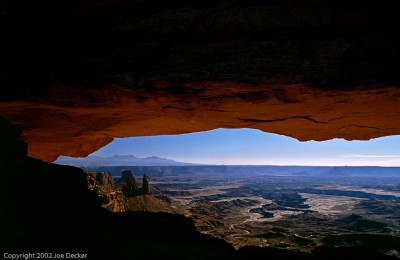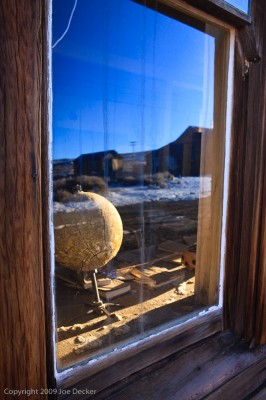If you like this article, you can now get the book! Joe has expanded the “Tuesday Composition” series into an inspiring new ebook on composition, especially for nature photography. Check it out: The Tuesday Composition.
Many of the topics we’ve discussed so far talk about the relationship between two objects in an image, from their relative distance from the camera to whether one is left or right of the other to visual similarity between two objects. Many of the cues we use to communicate using photographs stem from these sorts of signs. Today I’ll talk about another example: what happens when one image frames another within a photograph. I’ll say that the enclosing object “frames” the enclosed object, but here I’m not referring to picture frames, I’m still talking about parts of the photographic image itself.
These frames tend to serve two ends. Visually, frames in general (and darker frames in particular) often guide the eye toward the center of an image much in the same way that edge-burning does. As a matter of meaning, framing often provides context for the enclosed subject of the image. I think it’s likely that these two effects are related; our eyes are pulled to the center, the enclosed object in such a photograph, and as a result that object becomes the primary subject of the image. The frame itself speaks second, not first.
North Falls Canyon is a simple enough example. The top and bottom of the image show parts of a cave mouth. That placement (as well as the dark, featureless nature of the cave walls) pulls our attention into the canyon beyond, while leaving a quiet reminder of where we are viewing the canyon from.
It is interesting to compare Mesa Arch Panorama with North Falls Canyon. Other than the fact that the cave in the former image is fictional (the top of the image is a pretty famous freestanding arch of rock), the two images appear very similar, but I find that Mesa manages to extract another dose of meaning from the framing; the cramped enclosed nature of the “cave” in that image seems to help create a greater sense of openness, scale and space in the canyons and mountains beyond. Certainly the large swath of dark frame at the top of the image contributes to the sense of a cramped, enclosed space. But why does this make the landscape seem larger? Perhaps it’s the contrast (small and large, dark and light) that helps create this sense, perhaps it’s something about the shape of the frame (without the arch, the same image has a lot of blank blue sky, which seems to rob the mountains and canyons of their scale.
Framing can also be used the same way we often use near-far compositions, that is, to juxtapose a small detail element with a larger environment. Unlike many near-far compositions, however, the more distant part of the image (the enclosed part of the image) usually ends up becoming the primary subject, rather than the nearer part. In Framed Globe, a quick grab shot from Bodie, I’m able to juxtapose some detail of the window frame (providing a sense of age and detail with both the globe and reflections of the surrounding town. The frame contributes to our understanding of what we’re seeing, and it’s helpful that we get to see it very close, but it isn’t the primary subject of the photograph.
Frames provide a compelling visual pull to many images, and it’s worth some experimenting with them to understand how to use them more effectively in your own photography.
The post The Tuesday Composition: Framed, Inside and Out appeared first on Photocrati.





















